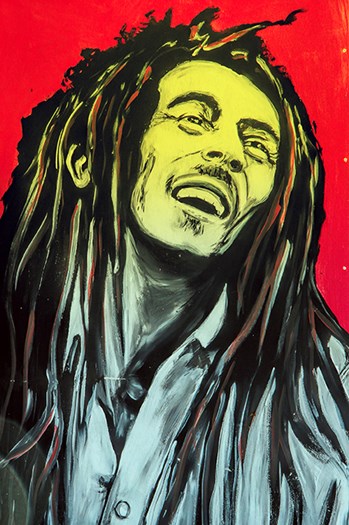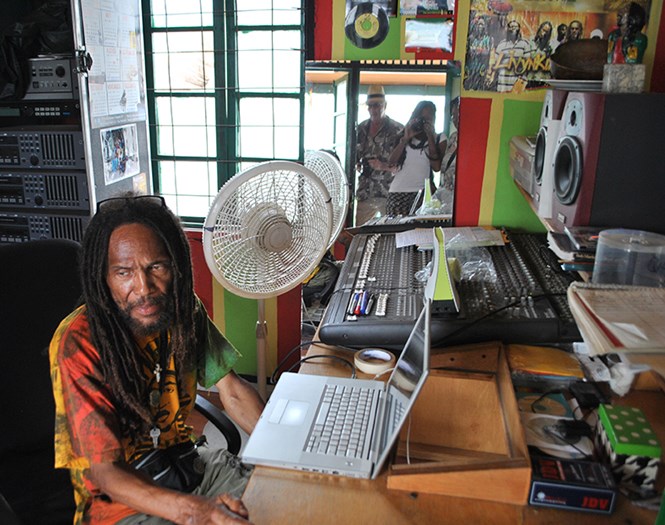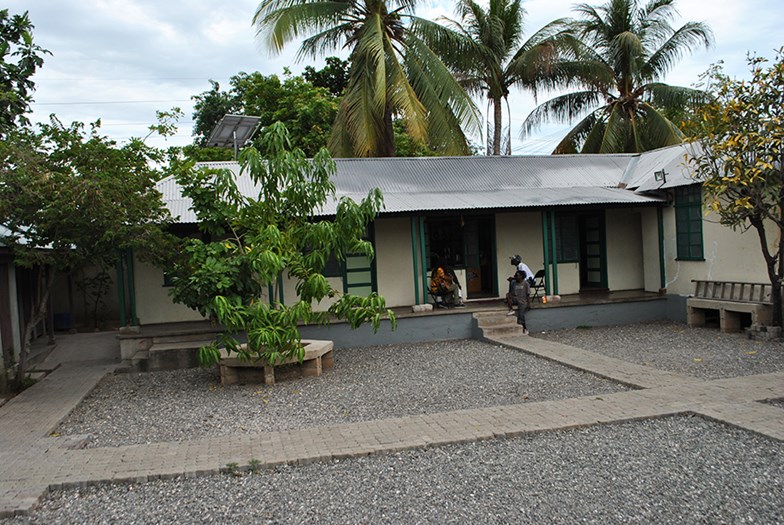KINGSTON - Soft strains of reggae guitar floated over the small, gravel-strewn courtyard in Jamaica’s capital. If I had been anywhere else on the island, I would have smiled and kept walking, but I was in Trench Town, in the same “government yard” that Bob Marley referenced in his song, “No Woman, No Cry,” so I immediately headed over to the musician.
With dreadlocks spilling down his slender shoulders, Ziggy Soul sang in a sweet lilt. As lead singer of the Living Culture Band, he was working on music for the group’s latest CD.
“It’s strictly live music, we don’t deal with computers,” he said of the band’s sound. It’s hard to ignore the resemblance in appearance and voice that Ziggy displays to Bob Marley, but it seems like vestiges of the icon pop-up all over Kingston, especially here, where Marley spent much of his youth.
“I met Bob as a kid and he promised to record me but he never came back to Trench Town,” he said, as his voice trailed off with a hint of sadness.
I sensed the same melancholy in many parts of Kingston; Bob Marley was — and is — the country’s greatest ambassadors, but many visitors don’t seem to move past the surface images of Bob’s music that highlight the island’s beauty and musical spirit. Lovely beaches and breezy reggae rhythms represent only a small part of Jamaica.
Bob also sang about the “concrete jungle” of Kingston and it’s here that the essence of Bob’s last years of life remain.
It’s true that Bob Marley was really a country boy; he was raised in the hills of St.Ann Parish, on the north coast of the island in a small village called Nine Mile and that’s where his body is buried. I had visited Nine Mile years ago and witnessed the simplicity and natural scenery that had nurtured him. But this time, I had come to see where the adult Bob, the gifted musician and storied freedom fighter, had developed. Kingston, the sprawling capital framed by the Blue Mountains and filled with cultural riches as well as struggling communities, is that place.
Located in the heart of Kingston, Trench Town spreads over a huge swath in the downtown area. The area is much like Bob described it decades ago; "crumbling roads, makeshift houses and people tackling the creeping grasp of poverty." The Trench Town Culture Yard is surrounded by a vibrant green, gold and red fence with an image of Bob painted on the side. Inside, the cramped house that Marley moved into at 13, rooms with architectural diagrams showing the original 1940s layout of the government housing and a rusted-out van that served as Bob’s first vehicle, form the centrepiece for the small museum.


Left: Bob Marley once described Trench Town as a place of crumbling roads, makeshift houses and people tackling the creeping grasp of poverty. Right: Friends of Marley, like Ziggy Soul, still hang out in Trench Town.
Sophia, the tour manager, provides anecdotes about Bob’s life and the experiences of Trench Town’s other residents.
Although the focus is on Marley, the Culture Yard is really about the community that influenced him, including neighbourhood elder Vincent “Tata” Ford, who helped Bob learn to play the guitar. It was on these dusty roads that he played fierce football games (soccer) that earned him the name “Tuff Gong,” and it was here that he formed a group called The Wailers. Music was always a major part of Trench Town — ska and rocksteady greats Alton Ellis, Delroy Wilson and The Melodians all lived here. Even Clive Campbell, credited with creating the hip hop sound as DJ Kool Herc, lived in Trench Town.
Ziggy Soul runs a small studio in the yard and the soulful melodies that he croons with his Living Culture band create a tangible connection that can’t be duplicated with fancy exhibits or curated surroundings. I felt honoured to have visited the humble dwelling and was happy to learn that the Trench Town Culture Yard is community-run and all the proceeds benefit the entire neighbourhood. I left clutching a copy of Ziggy’s CD, cherishing it as one of my most valuable souvenirs.
Although the Bob Marley Museum, housed in the Hope Road residence that he bought after he won fame, is only a few kilometres away from Trench Town, it’s a world away in social status. The 19th-century house originally belonged to Island Records owner Chris Blackwell and he sold it to Bob in 1975.
Encircled by a long fence and expansive grounds, the museum is surrounded by some of Kingston’s prime uptown real estate. But the posh location didn’t change Bob, and the house served as a laid-back compound for various musicians and family members until his death in 1981.
It also featured his recording studio, where he wrote and recorded seminal hits like “Crazy Baldheads,” which he wrote about neighbours who complained about his guitar and called the police on him.
The tour starts outside, with a mural of Bob’s seven sons (he had 12 children) and photos of the Wailers. Inside, Bob’s gold and platinum records line the walls and one room is plastered entirely with clippings from his tours and interviews. A life-sized hologram brings Bob to life and a replica of his favourite record shop sells a collection of his ever popular music.
Creaky pine stairs, that Bob loved to climb three at a time, run through the middle of the house. In the back, a gallery filled with striking photos of Bob and a theatre shows a 20-minute film to close out the tour. The museum presents fascinating details about Bob’s later years but I thought that the most memorable was his simple bedroom, preserved as he left it, with his slippers and favourite guitar by his bed.

Above: The Trench Town Culture Yard is community-run and all the proceeds benefit the entire neighbourhood.
Besides his homes, the place that really carries Bob Marley’s mark is the Tuff Gong International recording studio. Located on the southern end of Kingston, the studio was a local resource long before Bob started making music. In fact, he was turned away the first time he tried to enter because he was still unknown.
That quickly changed and it was on most of the studio’s equipment that Bob recorded some of his landmark albums. His grand piano, mixing board and keyboard occupy the studio that’s managed today by his son Ziggy. The interactive experience includes visits to the recording booth, mastering room and CD production and vinyl pressing facilities.
Musicians come from all over the world to record at the studio but Bob’s presence still lingers. A sign outside the studio reads, “We’ll free the people with music.”
Bob Marley’s music helped free people when he was alive and, judging from what I experienced in Kingston, his legacy continues that calling.
About the Author
With a love for travel passed down from her globe-trotting granny, Rosalind Cummings-Yeates has spent most of her journalism career exploring cultures and documenting arts history. A Chicago native who escapes the city's six months of cold by specializing in Caribbean and Latin American travel and culture, she loves climbing volcanoes, strolling cobblestone streets and trekking on pink-sand beaches. She's the author of Exploring Chicago Blues: Inside The Scene, Past & Present (History Press) and writes a bi-weekly travel column for Travel Pulse. Follow her adventures on her travel blog, Farsighted Fly Girl and @farsightedgirl on Twitter and Instagram.